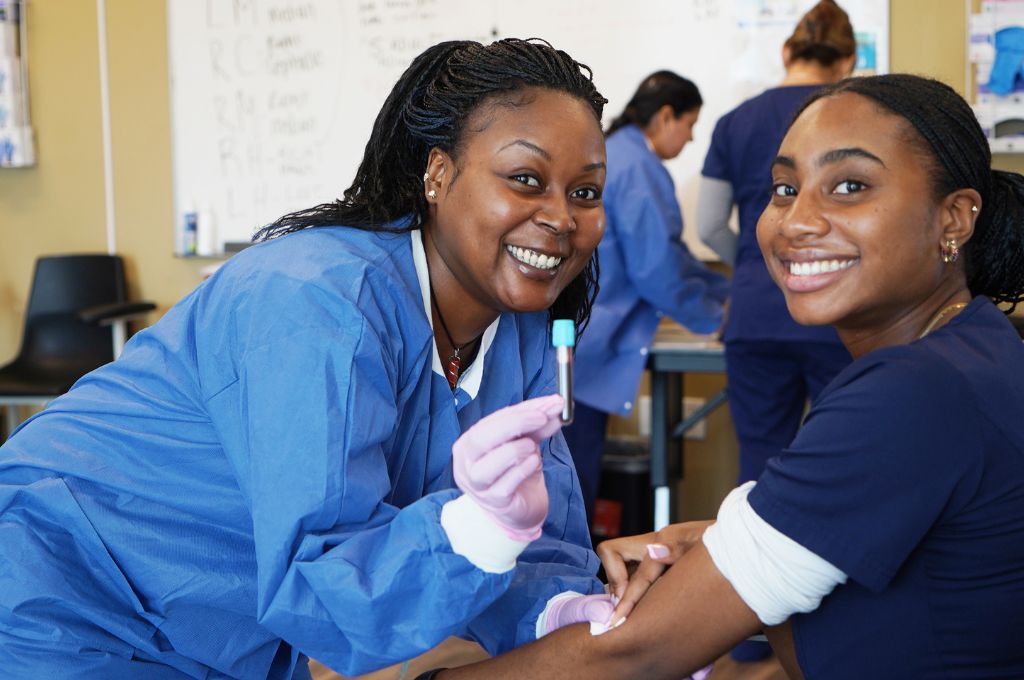
Phlebotomy Training Program
Module 1: Introduction to Phlebotomy
- Overview of Phlebotomy: History, role of a phlebotomist, career opportunities.
- Healthcare Settings: Different environments where phlebotomist work.
- Legal and Ethical Considerations: Confidentiality, patient rights, informed consent.
Module 2: Anatomy and Physiology for Phlebotomists
- Circulatory System Structure and function of the heart, veins, and arteries.
- Blood Composition: Components of blood and their functions.
- Venous Access Sites: Common venipuncture sites and their anatomy.
Module 3: Blood Collection Techniques
- Venipuncture Procedure Step-by-step guide to performing venipuncture.
- Capillary Puncture Techniques for fingersticks and heel sticks.
- Equipment and Supplies: Needles, tubes, tourniquets, and other phlebotomy tools.
Module 4: Safety and Infection Control
- Infection Control Practices Hand hygiene, use of gloves, and other PPE.
- Needlestick Injury Prevention: Safe handling and disposal of needles and sharps.
- Handling Biological Specimens: Safe practices for collecting and transporting blood samples.
Module 5: Patient Interaction and Communication
- Patient Identification: Ensuring correct patient identification before sample collection.
- Professional Communication: Effective communication techniques with patients and healthcare team.
- Dealing with Difficult Patients: Strategies for managing anxious or uncooperative patients.
Module 6: Specimen Handling and Processing
- Labeling and Documentation: Accurate labeling of specimens and completion of requisition forms.
- Specimen Transport and Storage: Proper techniques for transporting and storing blood samples.
- Quality Control Ensuring specimen integrity and quality.
Module 7: Special Collection Procedures
- Pediatric and Geriatric Phlebotomy: Techniques and considerations for special populations.
- Blood Cultures: Procedures for collecting blood cultures to avoid contamination.
- Point-of-Care Testing (POCT): Introduction to POCT and phlebotomist’s role.
Module 8: Complications and Troubleshooting
- Common Complications: Hematoma, fainting, and other potential issues.
- Problem-Solving Techniques: Strategies for dealing with difficult draws and other challenges.
- Post-Procedure Care: Managing patient care after blood collection.
Module 9: Professional Development
- Certification and Licensure: Overview of certification requirements and process.
- Continuing Education: Importance of ongoing education and professional development.
- Career Advancement Opportunities for advancement in the field of phlebotomy.
Module 10: Clinical Practicum
- Hands-On Training: Supervised practice in a clinical setting.
- Skill Assessment: Evaluation of proficiency in blood collection techniques.
- Feedback and Improvement: Constructive feedback to improve technique and confidence.
Assessment and Certification:
- Written Exams: Assess knowledge of theoretical concepts.
- Practical Exams: Evaluate hands-on skills in a controlled environment.
- Clinical Competency: Demonstrate proficiency during clinical practicum.
Course Duration:
- Total Hours: 100-150 hours (varies based on program structure)
- Theory 50 hours
- Lab Practice: 30 hours
- Clinical Practicum 20-70 hours
Prerequisites:
- High school diploma or equivalent.
- Basic understanding of human biology (recommended)
This structured program ensures that students are well-prepared to enter the workforce as competent and confident phlebotomists.
- Teacher: jim sempewo
